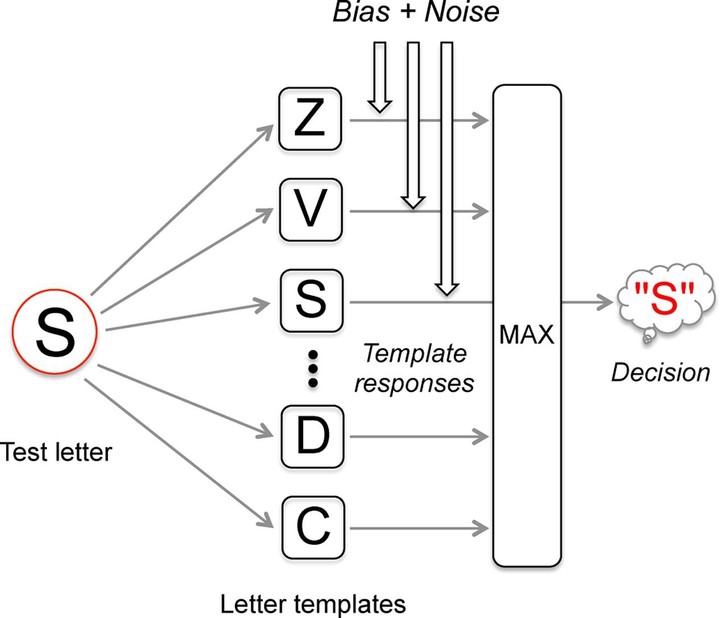Revealing the influence of bias in a letter acuity identification task: A noisy template model
 Noisy template model
Noisy template model
Abstract
In clinical testing of visual acuity, it is often assumed that performance reflects sensory abilities and observers do not exhibit strong biases for or against specific letters, but this assumption has not been extensively tested. We re-analyzed single-letter identification data as a function of letter size, spanning the resolution threshold, for 10 Sloan letters at central and paracentral visual field locations.
Individual observers showed consistent letter biases across letter sizes. Preferred letters were named much more often and others less often than expected (group averages ranged from 4% to 20% across letters, where the unbiased rate was 10%). In the framework of signal detection theory, we devised a noisy template model to distinguish biases from differences in sensitivity. When bias varied across letter templates the model fitted very well - much better than when sensitivity varied without bias. The best model combined both, having substantial biases and small variations in sensitivity across letters. The over- and under-calling decreased at larger letter sizes, but this was well-predicted by template responses that had the same additive bias for all letter sizes: with stronger inputs (larger letters) there was less opportunity for bias to influence which template gave the biggest response.
The neural basis for such letter bias is not known, but a plausible candidate is the letter-recognition machinery of the left temporal lobe. Future work could assess whether such biases affect clinical measures of visual performance. Our analyses so far suggest very small effects in most settings.